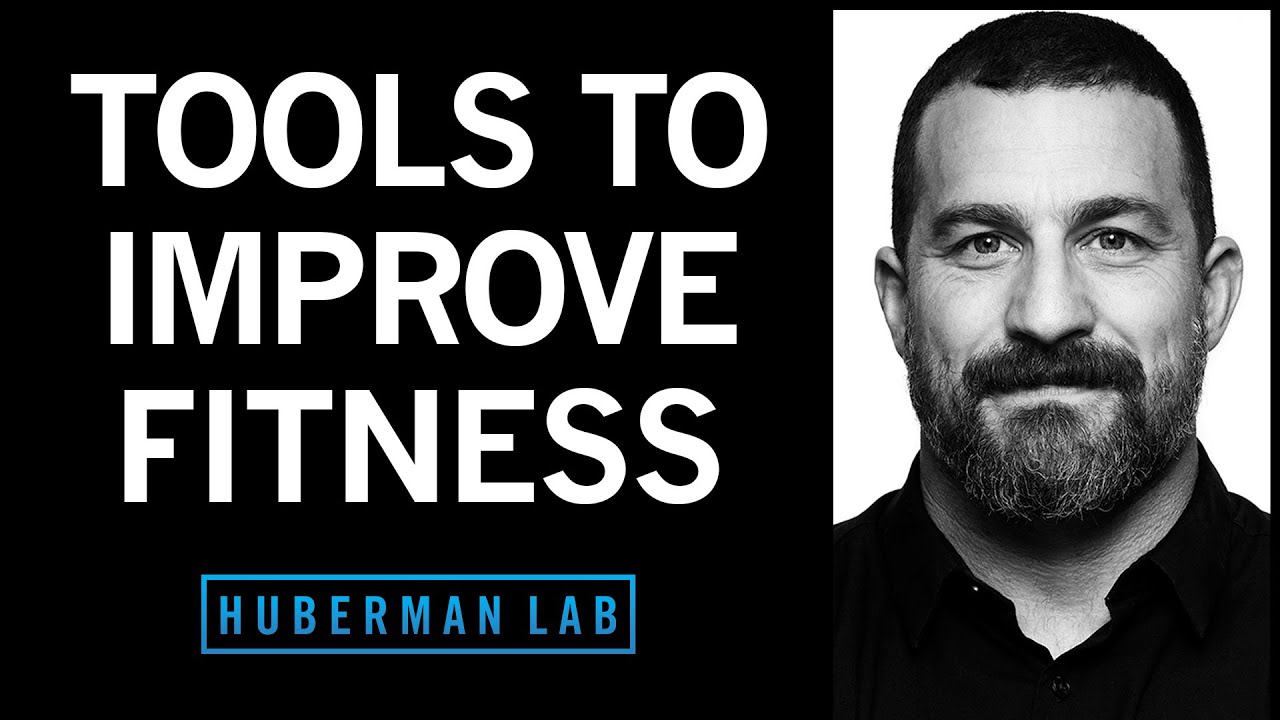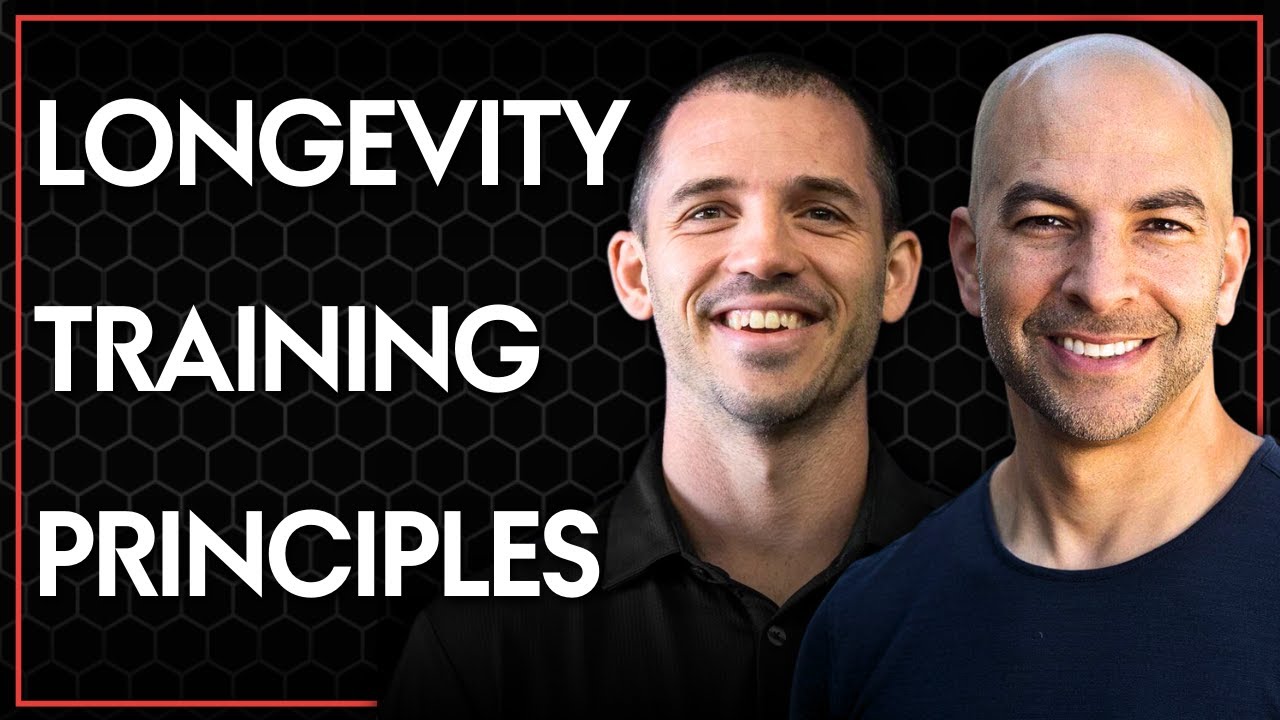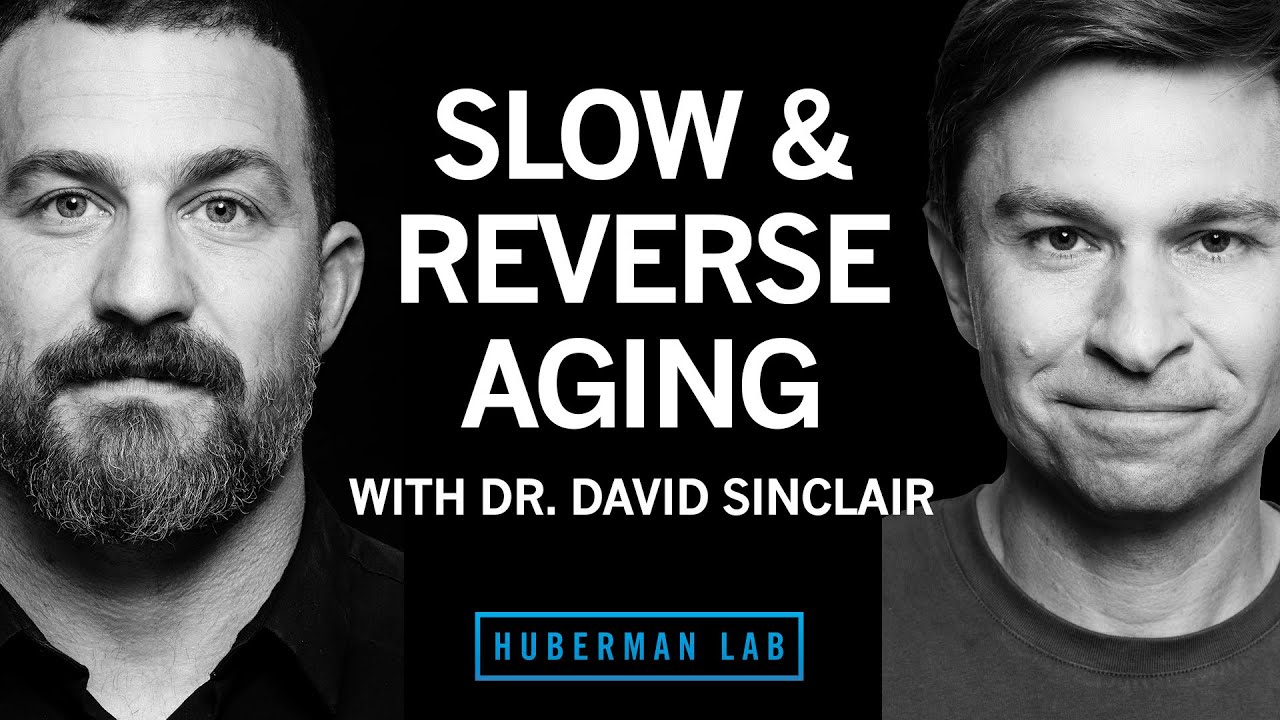- Improving fitness through “zone 2” training.
- Taking advantage of “heavy lifting” to boost health and well-being.
- Utilizing small bursts of activity to stay active throughout the day.
- Implementing breathing techniques to stay calm and focused.
- Setting “mental boundaries” for more efficient workouts and use of time.
- Being flexible with your nutrition and finding a plan that works for you.
Science-Supported Tools To Accelerate Your Fitness Goals
Science-Supported Tools To Accelerate Your Fitness Goals

- Instead of considering zone 2 cardio as a separate training session, incorporate it into daily life to easily reach the recommended 200 minutes.
- To improve health, choose 3-5 exercises to target muscles. Perform 3-5 sets of 3-5 reps with 3-5 min rest. Do this 3-5 times weekly for pure strength training with low repetition and minimal injury risk.
- Dr. Huberman suggests "exercise snacking" to stay fit despite a busy schedule. Focus on short bursts of activity to boost health and strength.
- During resistance training, Dr. Huberman suggests taking two deep breaths through the nose and exhaling through the mouth. This breathing technique can improve fitness performance.
- To improve your workout, choose a distraction-free location and limit phone use. Prepare a music playlist beforehand to avoid interruptions. This will help you achieve your fitness goals and rest adequately between sets.
- Listen to your body when deciding whether to work out fasted or not. Limit caffeine before exercise and be flexible with your nutrition. Find what works best for you.
Zone 2 & Your Daily Life
Achieving an optimal level of physical output is essential to maintain good health and well-being. Zone 2 is a perfect level of exercise that strikes a balance between engaging in a conversation, nasal breathing, and increasing your heart rate.
Zone 2 presents an excellent opportunity to enjoy the outdoors, both socially and physically, by engaging in activities such as:
- Hiking
- Cycling
- Walking with friends or family
- Jogging
- Stairclimber
Incorporating Zone 2 cardio exercise into your daily routine is a simple process that begins with increasing your total movement throughout the week. For example, Dr. Huberman says you could increase your pace while walking through the grocery store or take a brisk meeting walk with a colleague.
It’s worth noting that Zone 2 cardio not only enhances other aspects of fitness but also plays a crucial role in maintaining cardiovascular health. According to Dr. Huberman, getting 200 minutes of Zone 2 cardio per week is recommended.
Start incorporating Zone 2 exercise into your daily routine and experience the numerous benefits of having a healthier and more active lifestyle!

Source:https://www.open.edu/openlearn/health-sports-psychology/training-endurance
Low Reps with Heavy Weights
To enhance your overall health and fitness, Dr. Huberman recommends incorporating low-repetition pure strength training into your workout routine. This type of exercise involves lifting weights that are heavy enough to challenge your muscles but not too heavy that you can’t execute the exercise with proper form. Dr. Huberman reminds us that resistance training, particularly heavy lifting, has numerous benefits for our body.
By engaging in this exercise, you can:
- Maintain your cardiovascular fitness and form
- Enhance your strength
- Reduce soreness, and
- Experience less mental fatigue.
It’s worth noting that while heavy lifting can result in muscle growth, low-rep range training focuses more on increasing strength and less on hypertrophy or muscle size. If you want to add this type of training to your regimen,
Dr. Huberman recommends following this simple guide.
- Choose 3-5 exercises and perform 3-5 sets each, with 3-5 repetitions per set.
- Take 3-5 minutes rest between sets, and attempt to do this 3-5 times per week.
Follow this routine for 8-12 weeks to observe the optimal results.
Exercise Snacking
Maintaining physical fitness can be challenging, especially with a busy schedule. Dr. Huberman recommends “exercise snacking,” which involves two categories that benefit your body.
- Firstly, you can focus on improving or maintaining your cardiovascular activity, helping enhance your heart health.
- Secondly, you can concentrate on improving or maintaining your muscular endurance, helping build strength and stamina.
The main purpose of exercise snacking is to increase your heart rate, which can be achieved in short bursts of physical activity. This approach is consistent with your existing fitness program and requires no warm-up. It’s easy to fit exercise snacking into your daily routine, even while on a phone call, making it a convenient way to stay active and healthy.
Some easy ways to exercise snack:
- Standing up from your desk regularly
- Doing 25 burpees
- Doing 100-Star Jumps (Jumping Jacks)
- Running up and down the stairs and even
- Running to your car
In addition, incorporating muscle exercise snacking into your routine can provide numerous benefits. These types of exercises promote the development of microvascular supply to both muscles and connective tissue.
Examples can include:
- Planks
- Sit-ups
- Lunges
- Holding a squat or wall sit and
- Completing as many pushups as possible.
Breathing & Respiration
Dr. Huberman has suggested a highly effective breathing technique that should be incorporated during rest periods between resistance training sets.
This technique, known as a “physiologic sigh,” involves,
— Taking two deep breaths through the nose, followed by an extended exhale through the mouth.
By employing this technique, you can easily transition from a state of sympathetic to a parasympathetic mode. This is crucial as it helps you conserve alertness leading to better overall fitness performance.
Dr. Huberman recommends including 3-5 minutes of calm breathing at the end of every workout session. This period should consist of extended exhales as it promotes the start of the recovery process and reduces stress levels.
Dr. Huberman’s advice is certainly worth considering for anyone seeking to optimize their workout routines and improve their overall physical and mental health.
Set Boundaries & Commit To Exercise
If you want to get the best results from your workout and optimize your time spent, Dr. Huberman recommends “the line” technique. Essentially, this technique incorporates an imaginary or “tangible line” to differentiate the time before and after your workout.
This approach can help you:
- Mentally prepare for your workout
- Stay focused
- Wind down
- Stay committed, and
- Transition back to your routine afterward.
Additionally, Dr. Huberman suggests selecting a specific site to perform your workout. Once you step over the line, concentrate solely on the exercise and avoid getting distracted by emails or surfing through social media. By isolating your workout in this manner, you can guarantee that you optimize your time and accomplish your fitness objectives.
Along with establishing physical limitations, setting boundaries concerning phone usage while exercising is crucial. To prevent any disruptions from your phone, Dr. Huberman says to create a playlist, podcast, or audiobook before your workout and adhere to it throughout your exercise routine.
By following these tips, you can stay focused during your workout and take the right amount of rest between exercises. This means you’ll make the most of your time and get better results from your fitness routine. With these techniques, you can achieve your health and fitness goals.
Nutrition
If you find yourself feeling hungry before commencing your morning exercise regimen, there’s no need to worry. No rigid guideline dictates whether you should exercise on an empty stomach or after eating. What’s crucial is that you pay attention to your body and energy levels so that you can perform at your optimum level.
Having said that, it’s worth mentioning that consuming a moderate amount of caffeine in the morning is perfectly acceptable, particularly if you plan on working out. However, according to Dr. Huberman, delaying caffeine consumption is best if you experience an afternoon energy slump.
Providing your body with the nutrients it needs to fuel your workouts is an important part of maintaining optimal physical fitness. Dr. Huberman emphasizes that it’s necessary to remain flexible in this regard since life can be unpredictable, and you need to be ready for any unforeseen circumstances.
Ultimately, discovering what works best for you and your body is the key.



